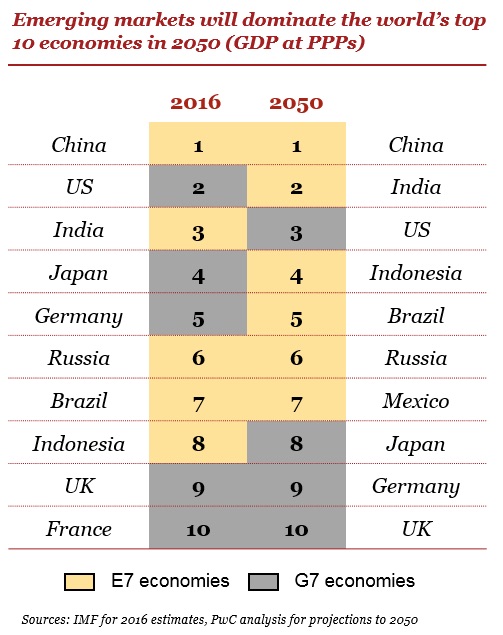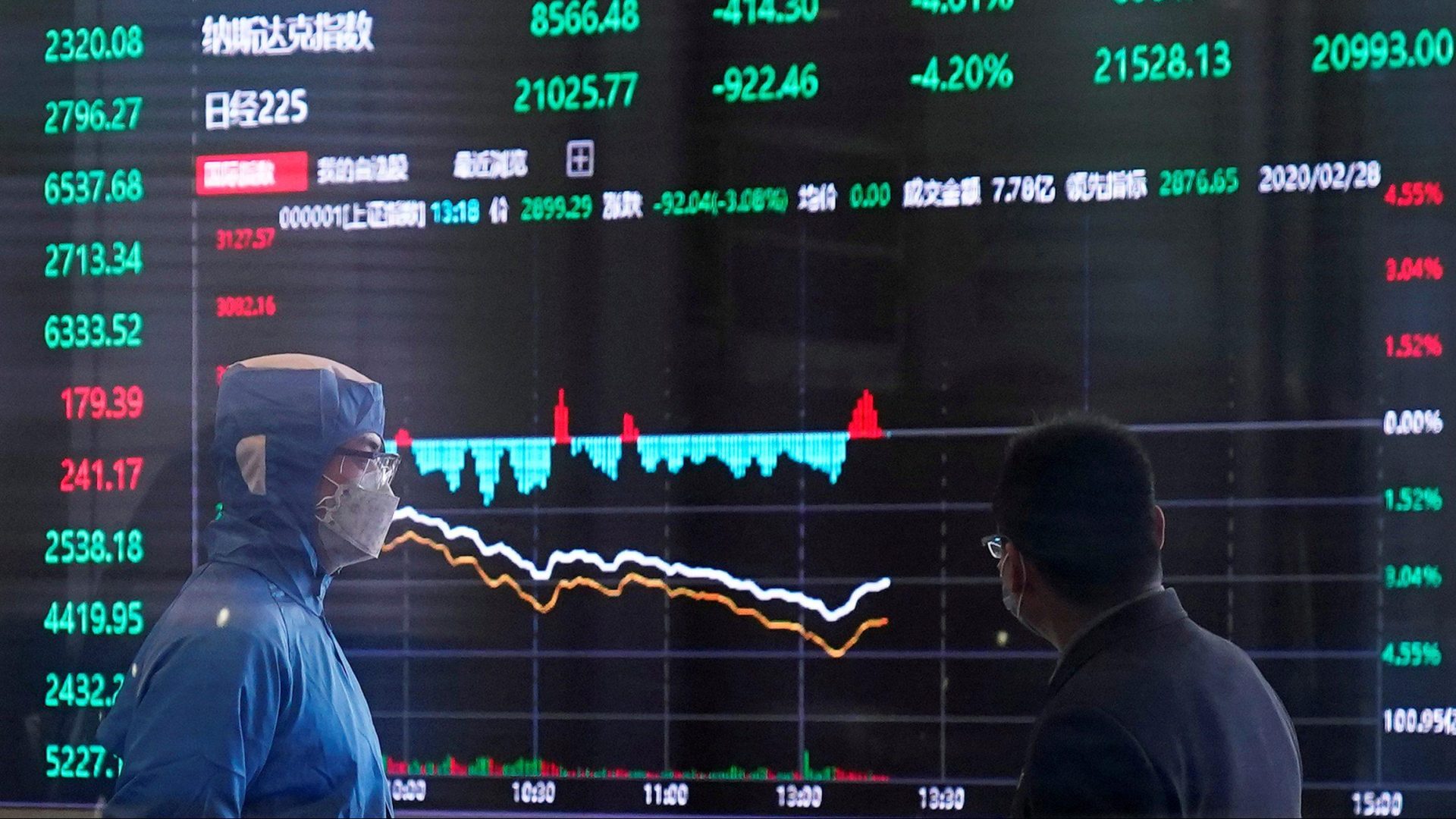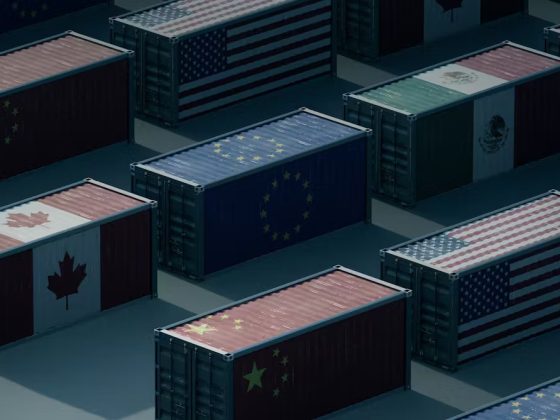What will happen to the world economy by the year 2050? PwC published some long-term predictions for the year 2050 in their 2017 paper, The Long View: How will the global economic order change by 2050? as an attempt to answer this.
Let’s boil down the report to the main points.
Overall growth
PwC projects that the world economy will double in size by the year 2050. They estimated that the cumulative global gross domestic product (GDP) growth will be 130% between 2016 and 2050. According to them, this expected growth is largely due to technology-driven productivity improvement.
In terms of income, the advanced economies at present are expected to continue having higher averages. However, emerging markets are expected to be on their way to close this gap by 2050 to eventually attain income convergence.
For their projections, PwC considered the 32 largest economies of the world, which account for about 85% of the world GDP.
PwC assumed for their projections that these countries would mostly adopt growth-friendly policies, meaning there would be no long-term retreats to protectionist practices.
At the same time, PwC also assumed that there will be no global civilisation-threatening catastrophes.
In the light of the COVID-19 pandemic which already has 885,687 confirmed cases and 44,216 deaths as of April 01, this assumption may be violated, depending on how this situation pans out and how the world will recover.
Losing ground

PwC said that China is expected to occupy the top spot in GDP rankings, retaining its present position. By 2050, it is projected to account for 20% of the global GDP.
Meanwhile, the current second place, the United States, will fall into the third place, overtaken by the current third place, India.
They also expect the global economic power to shift from the advanced or G7 economies — US, UK, France, Germany, Japan, Canada, and Italy — to the emerging or E7 economies — China, India, Indonesia, Brazil, Russia, Mexico, and Turkey.
By as early as 2040, E7 countries may be able to attain double the size of the G7. Six of the E7 are expected to be among the 10 largest economies in terms of GDP by 2050 — China (1st), India (2nd), Indonesia (4th), Brazil (5th), Russia (6th) and Mexico (7th).
Forging ahead
For the E7 countries to realise their growth potential, PwC recommended the implementation of structural reforms so that their macroeconomic fundamentals and institutions are strengthened. These reforms include improving their education system as well as investing both in infrastructure and technology.
On the whole, the world also has some challenges ahead. Our populations are ageing and there is also the issue of climate change. These would require thinking of ways that will allow the older population segment to still be capable of contributing later in life. Moreover, the implementation of sustainable policies that will allow us to stay on track of the emission targets is also necessary.
As mentioned, the current pandemic has the potential to wreck the growth that we are expecting in the succeeding years. With this, we also have to be proactive in flattening the curve and to eventually come up with a strong recovery plan to place our world back on track.









